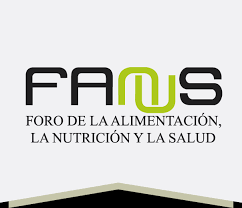View Item
- xmlui.general.dspace_homeCentros Regionales y EEAsCentro Regional Buenos Aires NorteEEA San PedroArtículos científicosxmlui.ArtifactBrowser.ItemViewer.trail
- DSpace Home
- Centros Regionales y EEAs
- Centro Regional Buenos Aires Norte
- EEA San Pedro
- Artículos científicos
- View Item
Cultivo y usos industriales del coriandro, con énfasis en la situación en Argentina = Cultivation and industrial uses of coriander, with emphasis on the situation in Argentina
Abstract
El coriandro, cilantro, cilandrio, culantro, según sus distintas denominaciones en español, es una planta anual perteneciente a la familia Apiaceae. Es la aromática que más produce y exporta Argentina. Se utilizan tanto sus granos como su planta en fresco. El objetivo de este trabajo es sintetizar los conocimientos del manejo del cultivo y las principales propiedades medicinales y alimenticias del coriandro, con énfasis en la situación en Argentina. Posee
[ver mas...]
El coriandro, cilantro, cilandrio, culantro, según sus distintas denominaciones en español, es una planta anual perteneciente a la familia Apiaceae. Es la aromática que más produce y exporta Argentina. Se utilizan tanto sus granos como su planta en fresco. El objetivo de este trabajo es sintetizar los conocimientos del manejo del cultivo y las principales propiedades medicinales y alimenticias del coriandro, con énfasis en la situación en Argentina. Posee numerosas propiedades medicinales: actividades antibacterianas, antioxidantes, hipoglucémicas, hipolipidémicas, ansiolíticas, analgésicas, antiinflamatorias, anticonvulsivas, anticancerígenas, antimutagénicas. Se utiliza en la industria alimenticia como condimento, en la formulación de mezclas de especias, en la industria del chacinado, en la saborización de licores, entre otros. El cultivo de coriandro para cosecha de sus granos en Argentina cuenta con un paquete tecnológico que permite obtener altos rendimientos potenciales, que aún no son alcanzados por la mayoría de los productores que requieren ajustar su manejo. El consumo del producto en fresco no está difundido y se limita al uso en restaurantes de cocina gourmet o de algunas etnias que habitan el país. Las propiedades del coriandro son amplias y permiten su potencial uso en la industria farmacéutica, además de su tradicional uso en la industria alimenticia.
[Cerrar]
Coriander, cilantro, cilandrio, culantro, according to its different names in Spanish, is an annual plant belonging to the Apiaceae family. It is the most produced and exported aromatic plant in Argentina. Both its grains and its fresh plant are used. The objective of this work is to synthesize the knowledge of the management of the crop and the main medicinal and nutritional properties of coriander, with emphasis on the situation in Argentina. It has
[ver mas...]
Coriander, cilantro, cilandrio, culantro, according to its different names in Spanish, is an annual plant belonging to the Apiaceae family. It is the most produced and exported aromatic plant in Argentina. Both its grains and its fresh plant are used. The objective of this work is to synthesize the knowledge of the management of the crop and the main medicinal and nutritional properties of coriander, with emphasis on the situation in Argentina. It has numerous medicinal properties: it has antibacterial, antioxidant, hypoglycemic, hypolipidemic, anxiolytic, analgesic, anti-inflammatory, anticonvulsant, anticancer, antimutagenic activities. It is used in the food industry as a condiment, in the formulation of spice mixtures, in the pork industry, in the flavoring of liquors, among others. The cultivation of coriander for grain harvesting in Argentina has a technological package that allows high potential yields, which are not yet reached by most producers who need to adjust their management. Fresh consumption of the product is not widespread and is limited to use in gourmet restaurants or by some of the country's ethnic groups. The properties of coriander are extensive and allow its potential use in the pharmaceutical industry, in addition to its traditional use in the food industry.
[Cerrar]

Author
Fuente
Revista del Foro de la Alimentación, la Nutrición y la Salud 4 (1-2) : 21-28 (2022)
Date
2022
Editorial
Foro de la Alimentación, la Nutrición y la Salud
ISSN
2683-9520
Documentos Relacionados
Formato
pdf
Tipo de documento
artículo
Proyectos
(ver más)
INTA/2019-PE-E6-I140-001/2019-PE-E6-I140-001/AR./Mejoramiento genético de plantas ornamentales, aromáticas y medicinales, nativas y exóticas
Palabras Claves
Derechos de acceso
Abierto
 Excepto donde se diga explicitamente, este item se publica bajo la siguiente descripción: Creative Commons Attribution-NonCommercial-ShareAlike 2.5 Unported (CC BY-NC-SA 2.5)
Excepto donde se diga explicitamente, este item se publica bajo la siguiente descripción: Creative Commons Attribution-NonCommercial-ShareAlike 2.5 Unported (CC BY-NC-SA 2.5)


